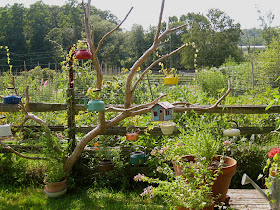
When this order came in for blackout shades with ribs, I knew I needed to develop a new method.
My standard method has been to make skinny pockets in the back for the ribs, but with blackout lining the stitching would leave horizontal light-bleed lines.
Though I don't love using adhesives- I like to think I sew, not glue, for a living- I know that blackout is all about NOT sewing, because every time the lining is pierced with needle or pin, light is allowed through.
So I worked out a non-sewn ribbed shade method that I like.
The weight bar pocket tape sold by
Rowley was used for the rib pockets. There is probably a cheaper alternative, but this is what I had on hand and it worked beautifully.

After pressing the sides of the lining to 1" less than the finished width, I adhered the pockets to the wrong side of the lining, using adhesive tape from
Atlanta Thread.
The lining was turned right side up onto the wrong side of the face fabric, which had been pressed to size. I ran rows of adhesive tape up each side but kept the paper on until after the rings were hand-sewn and the ribs inserted, then I reached under and released the paper, pressing the lining into place.
These shades had bottom trim, so I turned up a 2" hem and glued it in the back and glued on the trim.
I used tiny stitches to reinforce all the stress points of the shade so the glue and adhesive didn't have to bear all the burden of keeping the shade together. Also, of course, the tacking used to put the rings on goes through all layers, including the top of the pockets, so the pockets are secure as well.
There were three shades on one headrail, and they turned out perfectly, I think! They're on their way to being installed, and if I have time I'll run over and get a photo today. If not, I'll get pictures in a week or two when we install the swags in the dining room.
I totally forgot to take pictures while I worked! So the one above is the only one I have, but it does show a lot of what I just wrote about.
I think I'll use this method for two more shades I'm about to make, even though they aren't blackout. I like the hidden ribs and pockets.





























